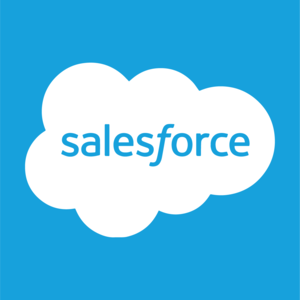
HubSpot (HUBS)
HubSpot is a sound business. Its blend of strong revenue growth and impressive unit economics gives it attractive upside.― StockStory Analyst Team
1. News
2. Summary
Why HubSpot Is Interesting
Born from the idea that traditional interruptive marketing was becoming less effective, HubSpot (NYSE:HUBS) provides an integrated platform that helps businesses attract, engage, and manage customer relationships through marketing, sales, service, and content management tools.
- Superior software functionality and low servicing costs lead to a stellar gross margin of 84.1%
- Annual revenue growth of 29.6% over the last five years was superb and indicates its market share is rising
- On the flip side, its operating profits increased over the last year as the company gained some leverage on its fixed costs and became more efficient


HubSpot has some noteworthy aspects. If you like the company, the price looks fair.
Why Is Now The Time To Buy HubSpot?
High Quality
Investable
Underperform
Why Is Now The Time To Buy HubSpot?
At $374.58 per share, HubSpot trades at 5.6x forward price-to-sales. HubSpot’s valuation is lower than that of many in the software space. Even so, we think it is justified for the revenue growth characteristics.
This could be a good time to invest if you think there are underappreciated aspects of the business.
3. HubSpot (HUBS) Research Report: Q3 CY2025 Update
Customer platform provider HubSpot (NYSE:HUBS) beat Wall Street’s revenue expectations in Q3 CY2025, with sales up 20.9% year on year to $809.5 million. Guidance for next quarter’s revenue was better than expected at $829 million at the midpoint, 0.5% above analysts’ estimates. Its non-GAAP profit of $2.66 per share was 2.9% above analysts’ consensus estimates.
HubSpot (HUBS) Q3 CY2025 Highlights:
- HubSpot adds Clara Shih, Meta’s head of business AI, to board of directors as worries mount about AI's impact on the business
- Revenue: $809.5 million vs analyst estimates of $785.7 million (20.9% year-on-year growth, 3% beat)
- Adjusted EPS: $2.66 vs analyst estimates of $2.59 (2.9% beat)
- Adjusted Operating Income: $161.5 million vs analyst estimates of $157.3 million (19.9% margin, 2.6% beat)
- Revenue Guidance for Q4 CY2025 is $829 million at the midpoint, roughly in line with what analysts were expecting
- Management raised its full-year Adjusted EPS guidance to $9.61 at the midpoint, a 1.2% increase
- Operating Margin: 1.4%, up from -1.4% in the same quarter last year
- Free Cash Flow Margin: 18.2%, up from 15.3% in the previous quarter
- Customers: 278,880, up from 267,982 in the previous quarter
- Market Capitalization: $24.87 billion
Company Overview
Born from the idea that traditional interruptive marketing was becoming less effective, HubSpot (NYSE:HUBS) provides an integrated platform that helps businesses attract, engage, and manage customer relationships through marketing, sales, service, and content management tools.
HubSpot's platform consists of multiple integrated "Hubs" built on top of a Smart CRM (Customer Relationship Management) system that maintains a unified view of customer interactions. These Hubs include Marketing, Sales, Service, Content, Operations, and Commerce, each designed to manage different aspects of the customer relationship lifecycle. The platform is enhanced by "Breeze," HubSpot's AI technology that powers productivity tools, automation, and data enrichment across the system.
Mid-market B2B companies primarily use HubSpot's platform to streamline their customer-facing operations. For example, a growing software company might use Marketing Hub to attract visitors through SEO and content marketing, convert them into leads with landing pages, nurture them with automated email campaigns, and then track their journey through the sales process using Sales Hub.
HubSpot offers its platform through a tiered subscription model, ranging from free basic tools to comprehensive enterprise packages. Revenue comes primarily from these subscriptions, with additional income from professional services. The company has built its technology on scalable, distributed systems capable of processing billions of data points weekly, allowing customers to gain insights across channels like social media, email, and website visits in near real-time.
4. Sales Software
Companies need to be able to interact with and sell to their customers as efficiently as possible. This reality coupled with the ongoing migration of enterprises to the cloud drives demand for cloud-based customer relationship management (CRM) software that integrates data analytics with sales and marketing functions.
HubSpot competes with Salesforce (NYSE:CRM) in CRM and marketing automation, Adobe (NASDAQ:ADBE) for marketing and content tools, Zendesk (private) for customer service, and Microsoft Dynamics (NASDAQ:MSFT) for integrated business solutions. Other competitors include Zoho, monday.com (NASDAQ:MNDY), and Freshworks (NASDAQ:FRSH).
5. Revenue Growth
A company’s long-term sales performance can indicate its overall quality. Any business can put up a good quarter or two, but the best consistently grow over the long haul. Over the last five years, HubSpot grew its sales at an impressive 29.6% compounded annual growth rate. Its growth beat the average software company and shows its offerings resonate with customers, a helpful starting point for our analysis.
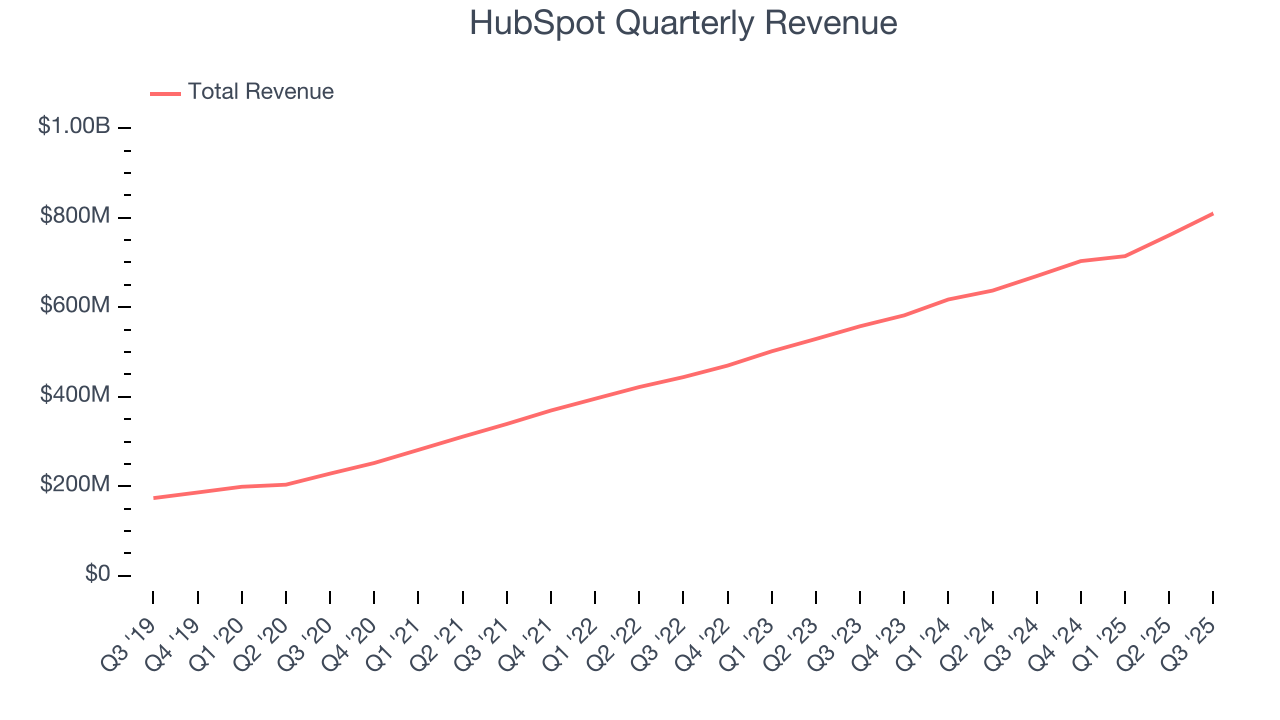
Long-term growth is the most important, but within software, a half-decade historical view may miss new innovations or demand cycles. HubSpot’s annualized revenue growth of 20.5% over the last two years is below its five-year trend, but we still think the results suggest healthy demand. 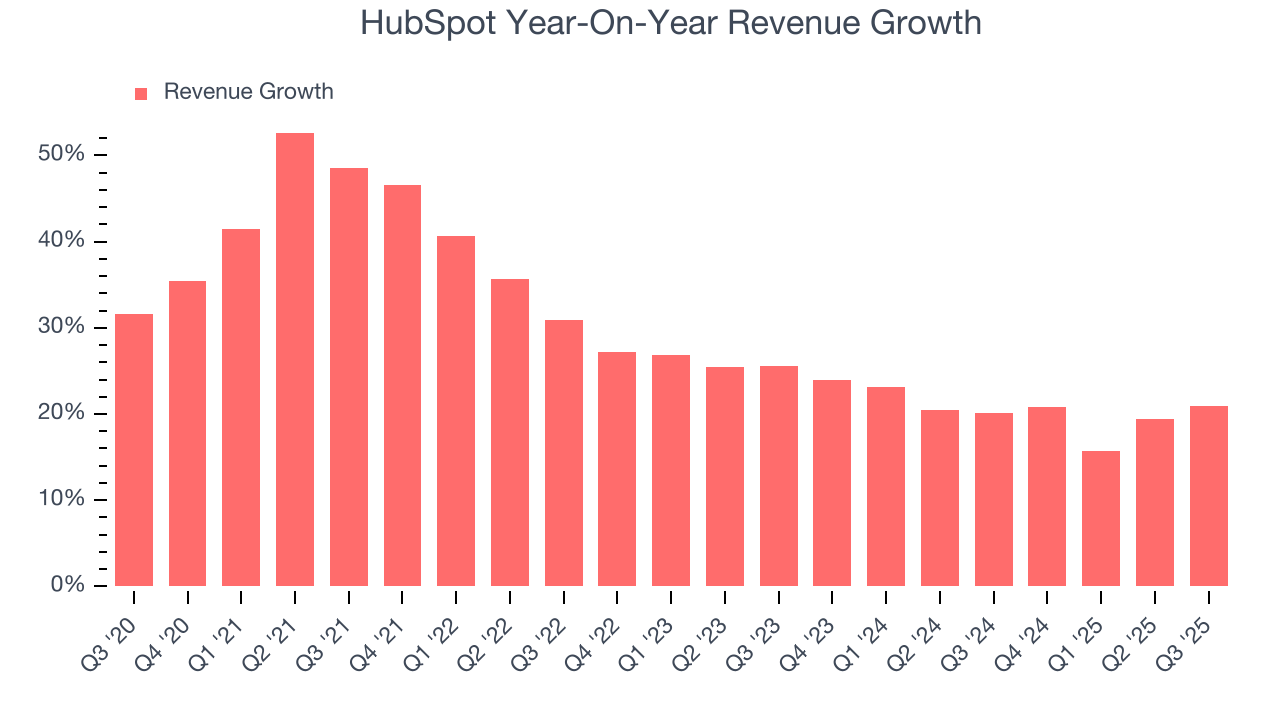
This quarter, HubSpot reported robust year-on-year revenue growth of 20.9%, and its $809.5 million of revenue topped Wall Street estimates by 3%. Company management is currently guiding for a 17.9% year-on-year increase in sales next quarter.
Looking further ahead, sell-side analysts expect revenue to grow 15.6% over the next 12 months, a deceleration versus the last two years. Despite the slowdown, this projection is above average for the sector and indicates the market sees some success for its newer products and services.
6. Annual Recurring Revenue
While reported revenue for a software company can include low-margin items like implementation fees, annual recurring revenue (ARR) is a sum of the next 12 months of contracted revenue purely from software subscriptions, or the high-margin, predictable revenue streams that make SaaS businesses so valuable.
HubSpot’s ARR punched in at $3.22 billion in Q3, and over the last four quarters, its growth was impressive as it averaged 19.6% year-on-year increases. This performance aligned with its total sales growth and shows that customers are willing to take multi-year bets on the company’s technology. Its growth also makes HubSpot a more predictable business, a tailwind for its valuation as investors typically prefer businesses with recurring revenue. 
7. Customer Base
HubSpot reported 278,880 customers at the end of the quarter, a sequential increase of 10,898. That’s a little better than last quarter and a fair bit above the typical growth we’ve seen over the previous year. Shareholders should take this as an indication that HubSpot’s go-to-market strategy is working well.

8. Customer Acquisition Efficiency
The customer acquisition cost (CAC) payback period represents the months required to recover the cost of acquiring a new customer. Essentially, it’s the break-even point for sales and marketing investments. A shorter CAC payback period is ideal, as it implies better returns on investment and business scalability.
HubSpot does a decent job acquiring new customers, and its CAC payback period checked in at 46.3 months this quarter. The company’s relatively efficient sales cycles stem from its self-serve model, where it can onboard many small customers at scale. This gives it more resources to improve its software so it can potentially move up market and serve enterprise clients, which can provide a second leg of growth. 
9. Gross Margin & Pricing Power
Software is eating the world. It’s one of our favorite business models because once you develop the product, it usually doesn’t cost much to provide it as an ongoing service. These minimal costs can include servers, licenses, and certain personnel.
HubSpot’s gross margin is one of the highest in the software sector, an output of its asset-lite business model and strong pricing power. It also enables the company to fund large investments in new products and sales during periods of rapid growth to achieve outsized profits at scale. As you can see below, it averaged an elite 84.1% gross margin over the last year. Said differently, roughly $84.13 was left to spend on selling, marketing, and R&D for every $100 in revenue.
The market not only cares about gross margin levels but also how they change over time because expansion creates firepower for profitability and free cash generation. HubSpot has seen gross margins improve by 0.2 percentage points over the last 2 year, which is slightly better than average for software.

HubSpot’s gross profit margin came in at 83.5% this quarter, marking a 1.7 percentage point decrease from 85.2% in the same quarter last year. On a wider time horizon, the company’s full-year margin has remained steady over the past four quarters, suggesting its input costs have been stable and it isn’t under pressure to lower prices.
10. Operating Margin
Although HubSpot was profitable this quarter from an operational perspective, it’s generally struggled over a longer time period. Its expensive cost structure has contributed to an average operating margin of negative 1.7% over the last year. Unprofitable, high-growth software companies require extra attention because they spend heaps of money to capture market share. This happened because the company spent loads of money to capture market share. As seen in its fast revenue growth, the aggressive strategy has paid off so far, and Wall Street’s estimates suggest the party will continue. We tend to agree and believe the business has a good chance of reaching profitability upon scale.
Over the last two years, HubSpot’s expanding sales gave it operating leverage as its margin rose by 1.5 percentage points. Still, it will take much more for the company to show consistent profitability.
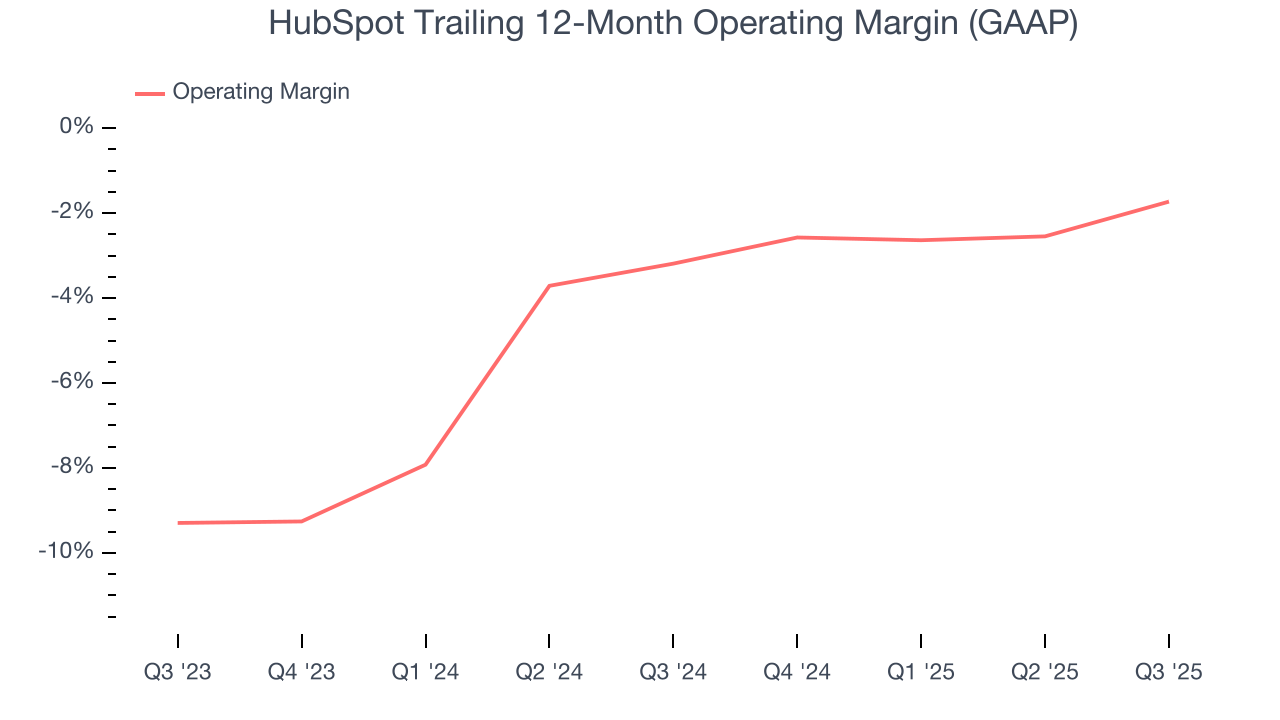
In Q3, HubSpot generated an operating margin profit margin of 1.4%, up 2.8 percentage points year on year. The increase was encouraging, and because its gross margin actually decreased, we can assume it was more efficient because its operating expenses like marketing, R&D, and administrative overhead grew slower than its revenue.
11. Cash Is King
Free cash flow isn't a prominently featured metric in company financials and earnings releases, but we think it's telling because it accounts for all operating and capital expenses, making it tough to manipulate. Cash is king.
HubSpot has shown decent cash profitability, giving it some flexibility to reinvest or return capital to investors. The company’s free cash flow margin averaged 18.1% over the last year, slightly better than the broader software sector.
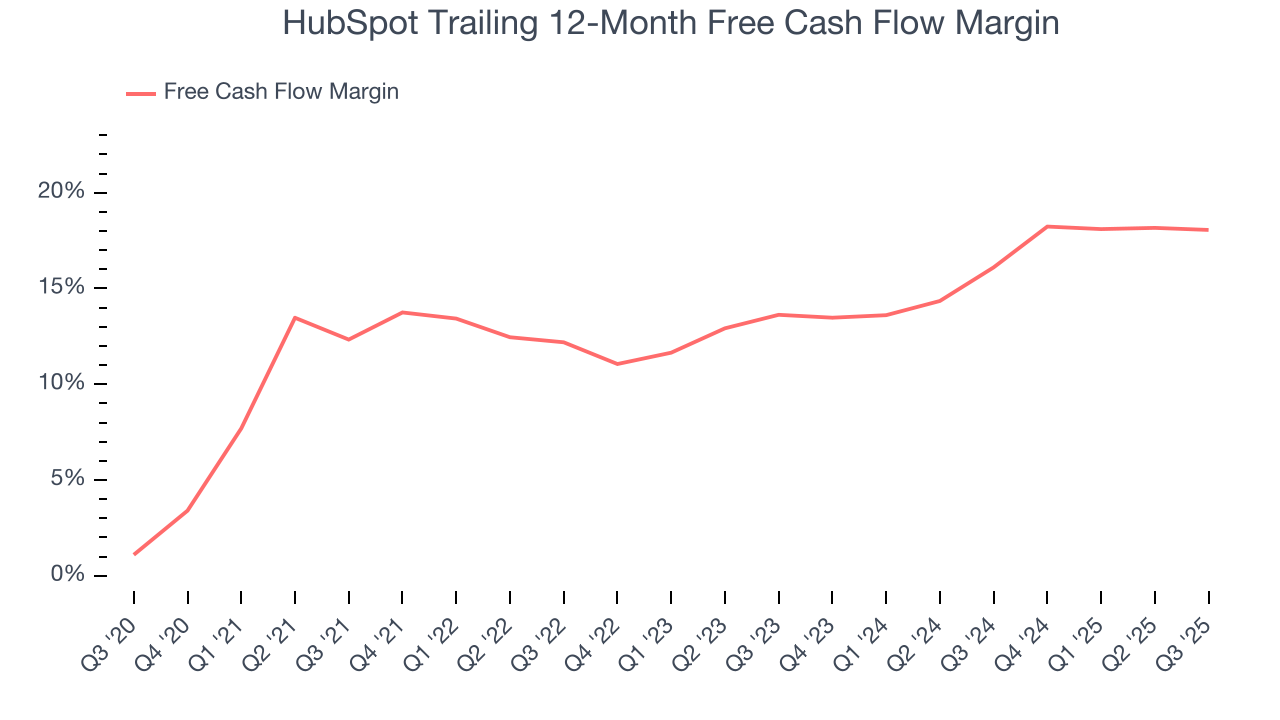
HubSpot’s free cash flow clocked in at $146.9 million in Q3, equivalent to a 18.2% margin. This cash profitability was in line with the comparable period last year and its one-year average.
Over the next year, analysts predict HubSpot’s cash conversion will slightly improve. Their consensus estimates imply its free cash flow margin of 18.1% for the last 12 months will increase to 19.4%, it options for capital deployment (investments, share buybacks, etc.).
12. Balance Sheet Assessment
Companies with more cash than debt have lower bankruptcy risk.
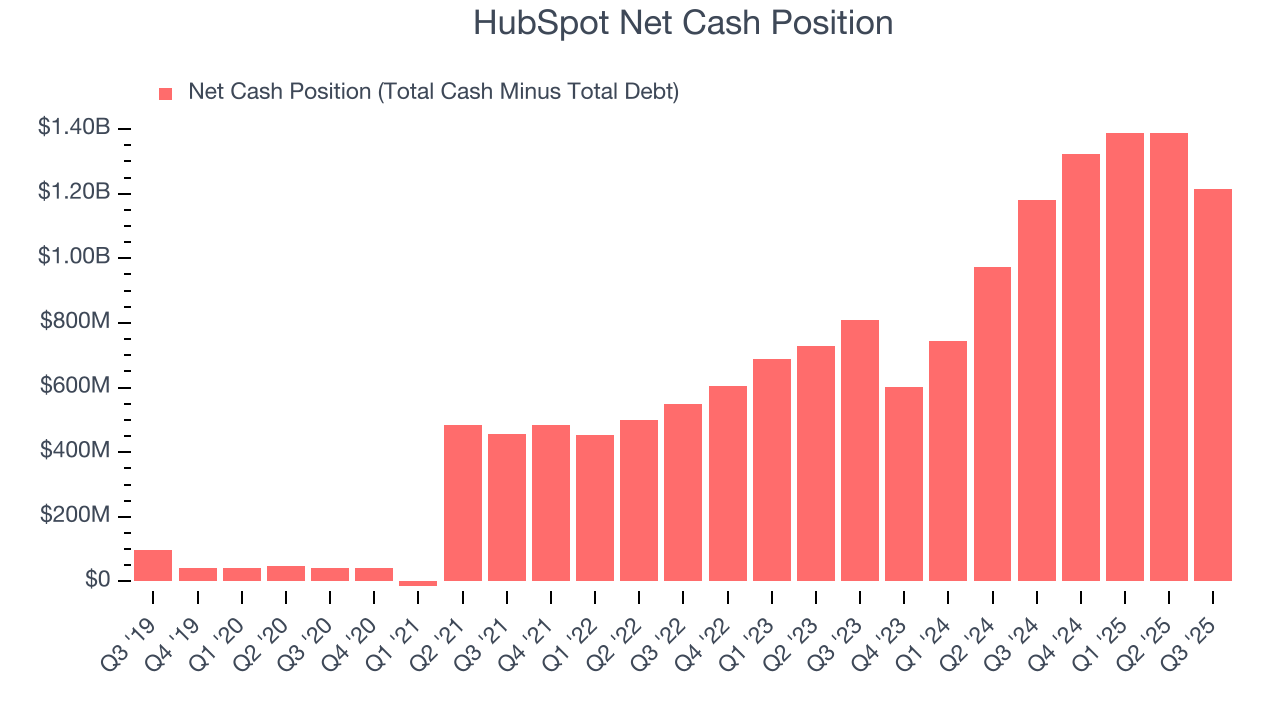
HubSpot is a well-capitalized company with $1.49 billion of cash and $271.9 million of debt on its balance sheet. This $1.21 billion net cash position is 5.9% of its market cap and gives it the freedom to borrow money, return capital to shareholders, or invest in growth initiatives. Leverage is not an issue here.
13. Key Takeaways from HubSpot’s Q3 Results
It was good to see HubSpot provide full-year EPS guidance that slightly beat analysts’ expectations. We were also happy its revenue outperformed Wall Street’s estimates. Additionally, HubSpot added Clara Shih, Meta’s head of business AI, to the board of directors as worries mount about AI's impact on the business. Overall, this print had some key positives, but it wasn't enough. The market seemed to be hoping for more, and the stock traded down 12.3% to $406.98 immediately after reporting.
14. Is Now The Time To Buy HubSpot?
Updated: December 4, 2025 at 9:09 PM EST
Before making an investment decision, investors should account for HubSpot’s business fundamentals and valuation in addition to what happened in the latest quarter.
There are a lot of things to like about HubSpot. First off, its revenue growth was strong over the last five years. And while its expanding operating margin shows it’s becoming more efficient at building and selling its software, its admirable gross margin indicates excellent unit economics. On top of that, its splendid ARR growth shows it’s securing more long-term contracts and becoming a more predictable business.
HubSpot’s price-to-sales ratio based on the next 12 months is 5.7x. When scanning the software space, HubSpot trades at a fair valuation. If you believe in the company and its growth potential, now is an opportune time to buy shares.
Wall Street analysts have a consensus one-year price target of $585.47 on the company (compared to the current share price of $377.50), implying they see 55.1% upside in buying HubSpot in the short term.




